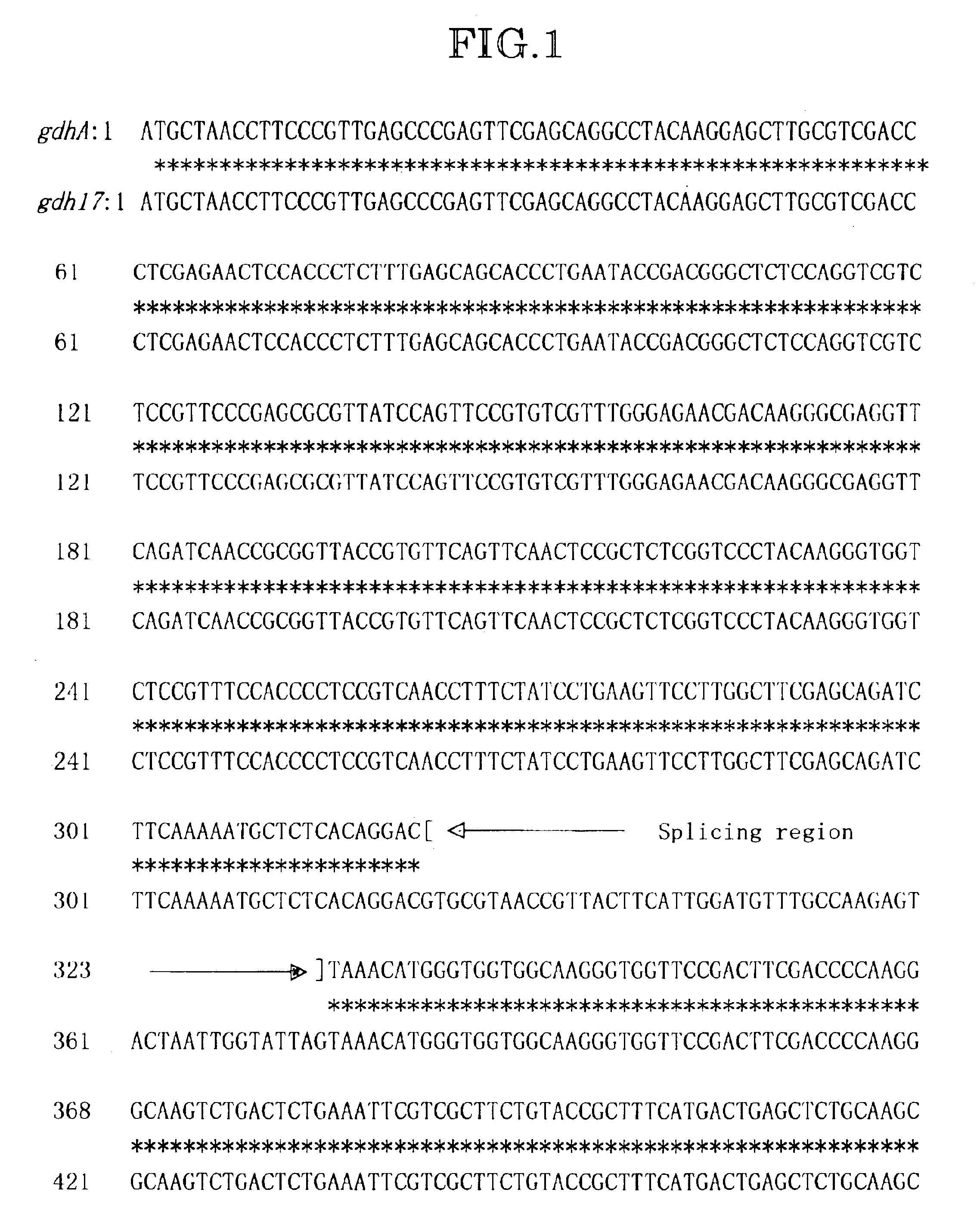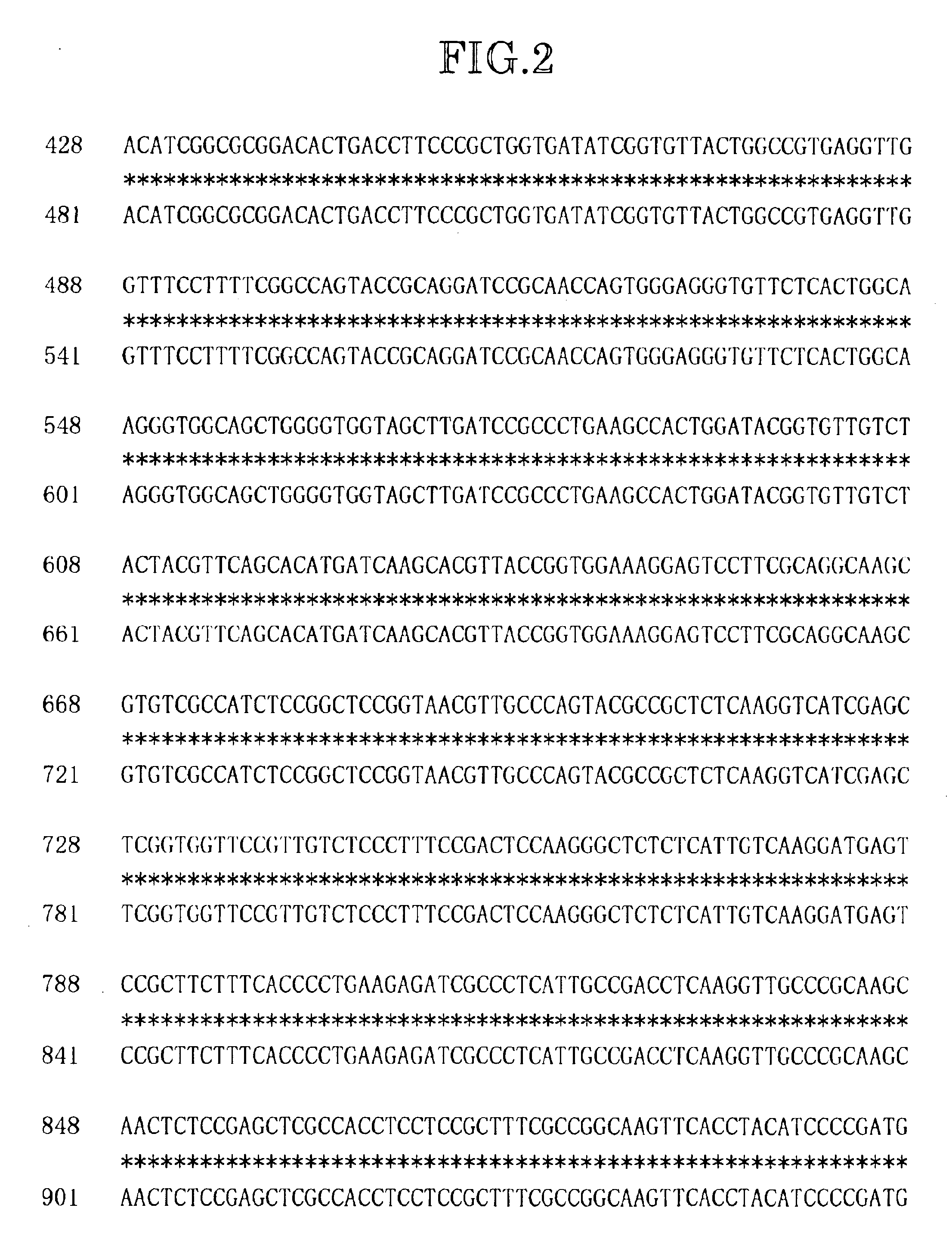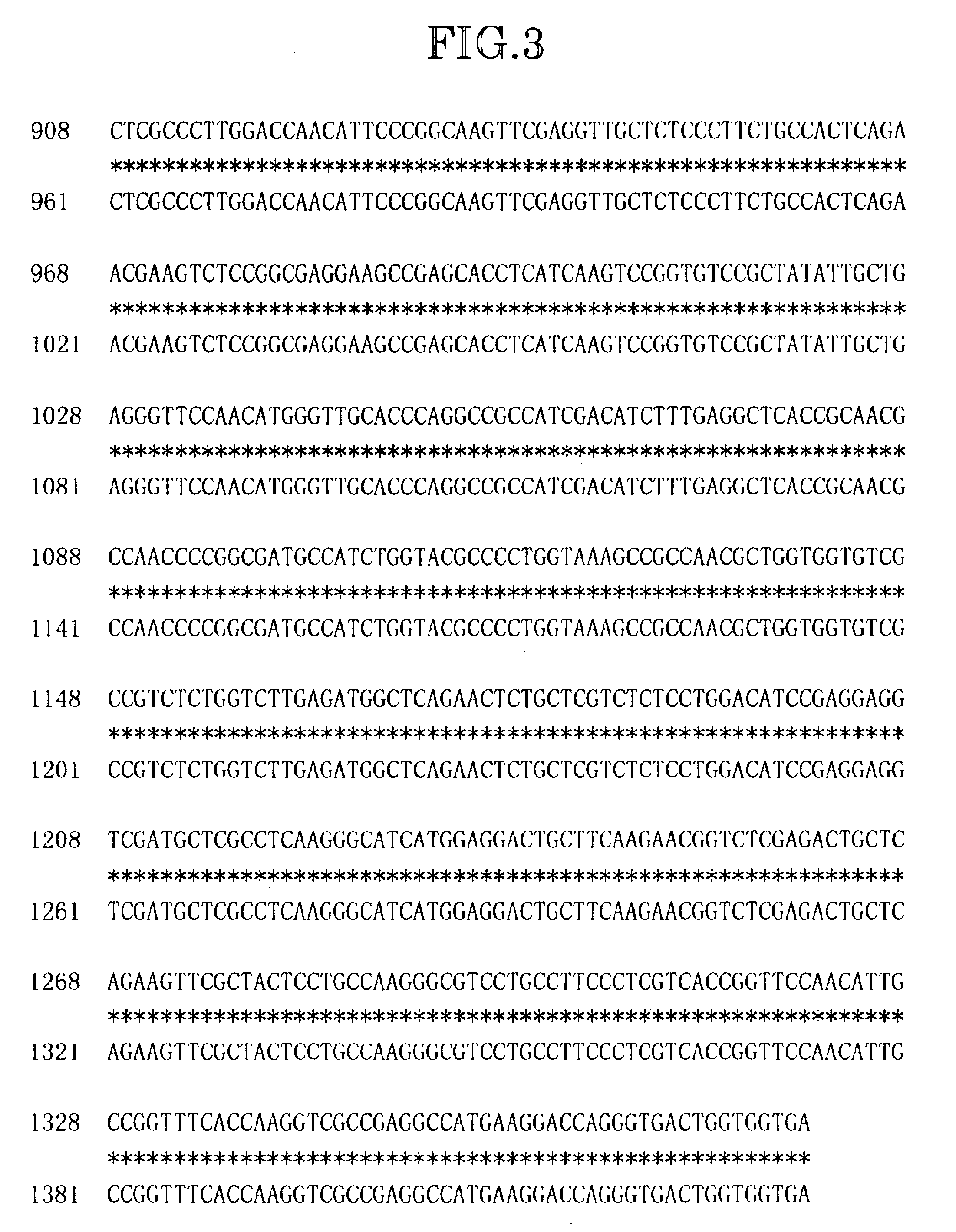Method of producing transgenic plants having improved amino acid composition
a technology of amino acid composition and transgenic plants, applied in the field of transgenic plants, to achieve the effect of increasing the free amino acid conten
- Summary
- Abstract
- Description
- Claims
- Application Information
AI Technical Summary
Benefits of technology
Problems solved by technology
Method used
Image
Examples
example 1
Isolation of GDH Gene from Aspergillus nidulans and Tomato, and Construction of Ti Plasmid
(1) Isolation of NADP-Dependent GDH Gene (AN-gdh-17) from Aspergillus nidulans and NAD-Dependent GDH Gene (T-gdh-4) from Tomato:
[0095]A. nidulans was cultured on potato dextrose agar medium at 30° C. overnight. The colonies thus obtained were further cultured in a dextrose liquid medium for 2 days. Total RNA was produced from the propagated microbes.
[0096]The inorganic salt of MS medium [Murashige and Skoog, Physiol. Plant., 15: 473-479 (1962)] (Wako Pure Chemical Industries, Ltd.) and MS vitamin were used for tomato seeds. At first, tomato seeds surface-sterilized with 70% ethanol (30 seconds) and 2% sodium hypochlorite (15 minutes) were placed on plant hormone-free MS agar medium, and cultured at 25° C. for one week while the daylight hours were kept to be 16 hours to obtain sterile plants. Total RNA was prepared from the roots of the obtained seedlings.
[0097]As for the total RNA, mRNA was pu...
example 2
Production of Transformed Plant by the Infection of Tomato Cotyledons with Agrobacterium
[0123]Tomato (cultivar, minitomato) seeds were surface-sterilized with 70% ethanol (30 seconds) and 2% sodium hypochlorite (15 minutes), and then placed on a plant hormone-free MS agar medium. The seeds were cultured at 25° C. for one week while the daylight hours were kept to be 16 hours. The cotyledons were taken from the obtained sterile seedlings and then placed on an MS agar medium containing 2 mg / l of Zeatin and 0.1 mg / l of IAA (regeneration medium in 9 cm Petri dish), and cultured under the same conditions as those described above for 2 days. Agrobacterium (EHA 101) containing thus genetically constructed gene was cultured in YEP medium (Table 3) overnight and used for the infection. The cotyledons cultured for two days were collected in a sterilized Petri dish, and the Agrobacterium suspension was added to them to cause the infection. Superfluous Agrobacterium suspension was removed from...
example 3
Transformation of Arabidopsis by Vacuum Infiltration Method
[0126]The gene introduction into Arabidopsis was conducted by modified method of Bechtold N [C. R. Acad. Sci. Paris, Life Science 316; 1194-1199 (1993)]. Arabidopsis seeds were planted in a compost and cultivated at 22° C. for 10 days while the daylight hours were kept to be 16 hours. Each of the seedlings was planted in a rock wool (3 cm×3 cm), and the cultivation was continued under the same conditions for additional 3 weeks. When the plants began flower stalk formation, the top of each plant was pinched, and the cultivation was further continued for one week. Agrobacterium was cultured in YEP medium containing an antibiotic at 28° C. for 24 hours, and the microbes collected by the centrifugation (7,000 rpm, 10 minutes) were suspended in a suspension medium for infiltration (½ MS salt, ½ Gamborg B5 vitamin, 5% sucrose, 0.5 g / l MES, 0.044 μM benzylaminopurine, pH 5.7). After removing flowers and fruits which had been alread...
PUM
| Property | Measurement | Unit |
|---|---|---|
| pH | aaaaa | aaaaa |
| thickness | aaaaa | aaaaa |
| concentration | aaaaa | aaaaa |
Abstract
Description
Claims
Application Information
 Login to View More
Login to View More - R&D
- Intellectual Property
- Life Sciences
- Materials
- Tech Scout
- Unparalleled Data Quality
- Higher Quality Content
- 60% Fewer Hallucinations
Browse by: Latest US Patents, China's latest patents, Technical Efficacy Thesaurus, Application Domain, Technology Topic, Popular Technical Reports.
© 2025 PatSnap. All rights reserved.Legal|Privacy policy|Modern Slavery Act Transparency Statement|Sitemap|About US| Contact US: help@patsnap.com



